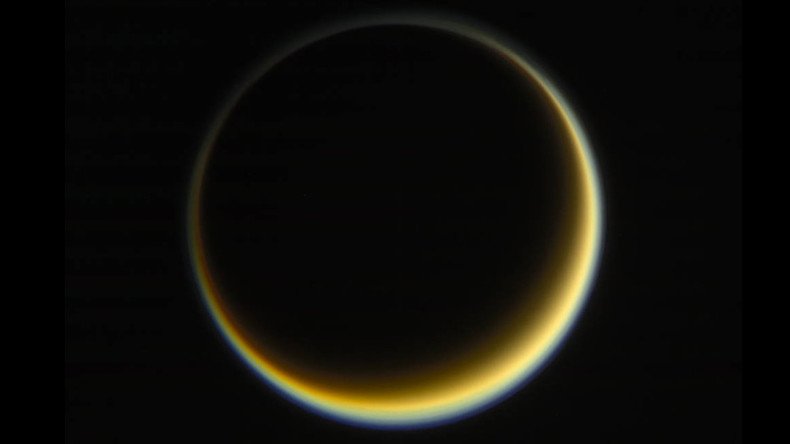Cassini enters fiery endgame as 20yr mission reaches final phase

The Cassini spacecraft completed the first of five close flybys of Saturn as it comes to the end of its 20-year mission. It will culminate in a fiery farewell as it makes a one-way trip to the gas giant’s surface on September 15.
"As it makes these five dips into Saturn, followed by its final plunge, Cassini will become the first Saturn atmospheric probe,"said Linda Spilker, Cassini project scientist at NASA’s research center, known as JPL.
“It's long been a goal in planetary exploration to send a dedicated probe into the atmosphere of Saturn, and we're laying the groundwork for future exploration with this first foray.”
Cassini skimmed above Saturn’s clouds at 12:22am EDT Monday, August 14, at an altitude of between 1,010 and 1,060 miles (1,630 and 1,710 km respectively).
Cassini probe: Saturn’s 'lack of tilt' leaves scientists baffled https://t.co/buJ4kOIw0fpic.twitter.com/IbjQUme8M0
— RT (@RT_com) July 26, 2017
Depending on the results of this first close pass, and the density of the atmosphere, the Cassini team may even opt for a 'pop-down' maneuver which will bring the craft 120 miles (200km) closer to the clouds on its second pass.
This would enable several instruments on board the spacecraft to gather unprecedented amounts of information on the gas giant.
Some of the info that could be gathered includes atmospheric data at the cloud tops, temperature data, high-resolution imagery of Saturn's auroras, and detailed observations of the planet’s vortexes and chemical composition.
At present, Saturn is believed to be made up of about 75 percent hydrogen with the rest consisting of helium and trace amounts of other chemical compounds.
The Cassini team is also hoping to definitively determine the length of a day on the planet, by looking at the offset between the magnetic field and the planet's axial tilt. The current consensus is that a day lasts 10-and-a-half hours, but results have been hard to pin down.
#NASA analyzing eerie whistling sounds coming from space (AUDIO) https://t.co/iXgCXmhj3Khttps://t.co/jM0uPlOTvc
— RT (@RT_com) July 18, 2017
As part of its 20-year mission, Cassini has spent a total of 13 years at Saturn, consisting of 127 close flybys of Titan.
“Cassini's Titan flybys prepared us for these rapid passes through Saturn's upper atmosphere,” said Earl Maize, Cassini project manager at NASA's Jet Propulsion Laboratory (JPL) in California in a press release.
“Thanks to our past experience, the team is confident that we understand how the spacecraft will behave at the atmospheric densities our models predict.”
Out of this world: Cassini snaps rare photos of Saturn’s ‘hexagon’ storm (PHOTOS) https://t.co/XXBHeRXeztpic.twitter.com/IzL5XvyiQp
— RT (@RT_com) June 30, 2017
The probe is running low on fuel and the international team were worried that the probe's decaying orbit might crash it into Titan or Enceladus, two of the most promising candidates for microbial life in our solar system. This is why the decision was made to end the mission in such a blaze of glory.
On September 11, Cassini will say farewell to Titan, triggering its final 'drop-down' maneuver before completing its fiery descent to the planet's surface.
Titan tweaked Cassini's flight path several times during the mission and will ultimately be the engine of its demise.
"Now that we've completed Cassini’s investigation of Titan, we have enough detail to really see what Titan is like as a world, globally," said Steve Wall, deputy lead of Cassini's radar team at NASA's Jet Propulsion Laboratory in Pasadena, California.
"It's pretty remarkable that we ended up close to where we started," said Wall. "The difference is how richly our understanding has grown, and how the questions we're asking about Titan have evolved."












